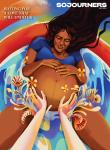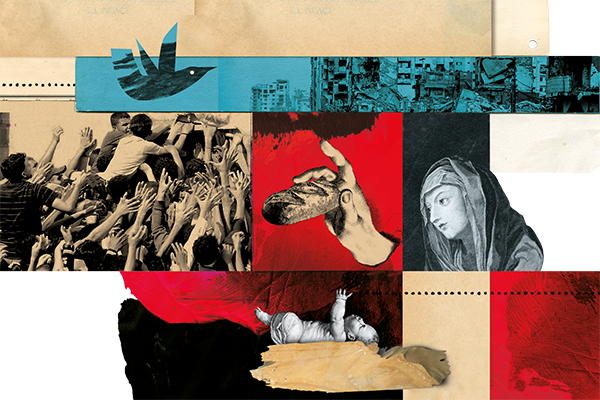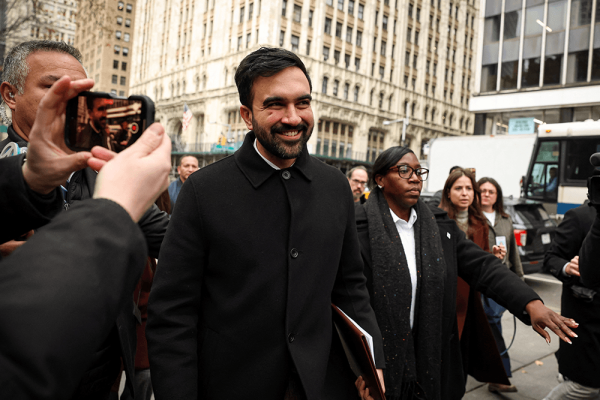ON SEPT. 5, the U.S. Department of State announced that it had secured the release of 135 political prisoners in Nicaragua. Among those released were 11 pastors of the Mountain Gateway ministry and a number of Catholic laypeople. These victims of the Ortega-Murillo regime’s sweeping persecution of religion will join hundreds of now stateless priests, women religious, bishops, and other believers exiled to Guatemala, Costa Rica, the United States, and even Vatican City.
Despite this negotiated release, the U.S. Commission on International Religious Freedom still lists 36 Nicaraguans imprisoned because of their faith. That number does not include the thousands of Nicaraguans who have fled because of their beliefs or the more than 1,600 religious organizations and facilities that have been closed by the regime. Dozens of priests and ministers have been arrested. Religious charities, schools, universities, radio stations, churches, and clinics have been shuttered. Religious orders have been banned. Traditional religious processions for Holy Week have been outlawed. Secret police systematically monitor religious services. Even Mother Teresa’s Missionaries of Charity were escorted from the country by armed police.
President Daniel Ortega’s authoritarian-trending-toward-totalitarian regime is powerfully repressing the Catholic faith and is rapidly expanding its persecution to Protestant and Indigenous faith communities. However, it was not always so.
Ortega is the former Sandinista revolutionary educated by the Lasallian Christian Brothers, at the La Salle Instituto Pedagógico, a prominent Catholic academy in Managua. During the long revolutionary years leading up to the overthrow of the Somoza dictatorship in 1979, Sandinistas found useful support from Catholic circles inspired by the era’s emerging liberation theology. Liberationist priests took prominent positions in the early Sandinista governments, including several cabinet positions. And, while relations between the Catholic Church and Ortega soured later in the 1980s, by the turn of the century Ortega was again courting the church. He apologized for actions taken against Catholic leaders in the ’80s. He publicly converted to Catholicism and, in 2005, married his partner (now vice president) Rosario Murillo in a Catholic Mass officiated by Managua’s Archbishop Obando y Bravo.
That détente with the church began to go south following Ortega’s election in 2006. With that election, his regime began to resemble the Somoza dictatorship he once sought to overthrow. Like the Somoza family, Ortega family members were appointed to key government positions. His wife, Murillo, in time became vice president. Following the Somoza model of dictatorship, the rights of those opposing the regime were whittled away. Opposition candidates were jailed. Controlling Nicaragua’s legal system, Ortega engineered rulings to stay in office indefinitely. Popular movements in response to the Ortega regime’s corruption and repression were met with brutal violence, resulting in hundreds of protesters killed or imprisoned. And, the Catholic Church, concerned about the regime’s erosion of human rights, was increasingly targeted by Ortega and his allies.
The year 2018, with its mass demonstrations against the regime, was a pivotal point in the anti-Catholic turn. The Jesuit-run Universidad Centroamericana was a staging ground for student protests and provided sanctuary for students and other protesters amid violent crackdowns by police and other regime forces. In response, its rector was exiled from the country, funding for the university was throttled, and the university itself was seized on a trumped-up allegation of terrorism. Prominent prelates such as Bishops Silvio Báez and Abelardo Mata Guevara were threatened with indictments for insurrection. Some Catholic leaders, notably Bishop Rolando Álvarez and later Bishop Isidoro Mora, spoke out publicly against the repression, imprisonments, loss of rights, and violence.
In response, the regime arrested Bishop Álvarez in 2022 and sentenced him to 26 years imprisonment. Dozens of priests were also arrested at about the same time, and reports of torture have been widespread. Facing pressure, the Vatican closed its embassy to the country in 2023. Even the liberationist priests who once worked with Sandinistas were now vilified by Ortega and his allies. Following an intervention by Pope Francis, Bishop Álvarez and most of the imprisoned priests ultimately were released, but simultaneously stripped of their citizenship and exiled.
Building on its successful repression of the Catholic Church, the Ortega-Murillo regime today is increasingly turning its persecution toward Protestant and Indigenous faith groups. Protestant churches endure constant monitoring, interference with services, and various threats. The Moravian Church, primarily a faith community of the Indigenous Miskitu people, is continually harassed and surveilled by agents of the government. In 2023 the ENLACE Christian Foundation, an evangelical ministry, was forced to close. The government also seized and closed the Verbo Christian Missionary Association, an evangelical charity. This past spring the regime imposed huge fines on 20 evangelical pastors and threatened criminal charges. The Nicaraguan Protestant University-Martin Luther King Jr., founded in 1994 as a joint effort of 27 denominations and evangelical institutions, was closed and its properties seized.
The 11 Mountain Gateway pastors released in September were originally arrested in December 2023. This past March, following tactics similar to those used against other congregations, the arrested pastors were convicted on the spurious charge of money laundering. Each was sentenced to more than a decade imprisonment and fined $80 million. While imprisoned, they were denied access to attorneys.
Whatever Daniel Ortega once thought about the value of religion, his authoritarian regime is no friend to people of faith today.

Got something to say about what you're reading? We value your feedback!







